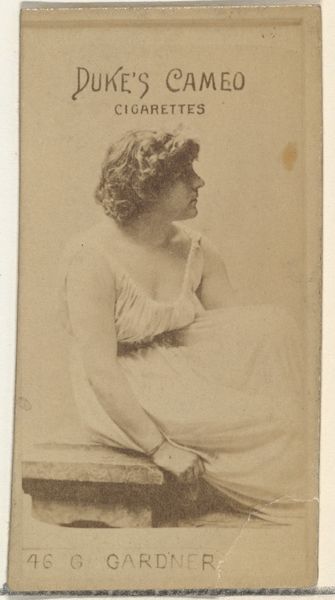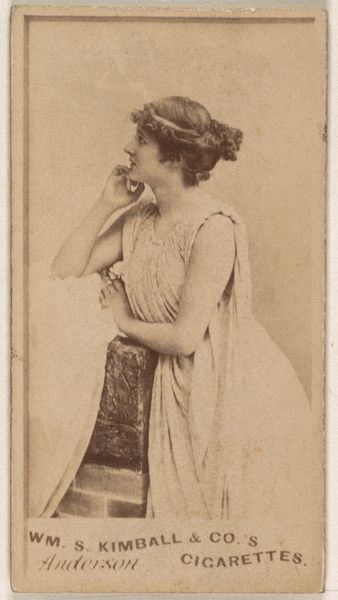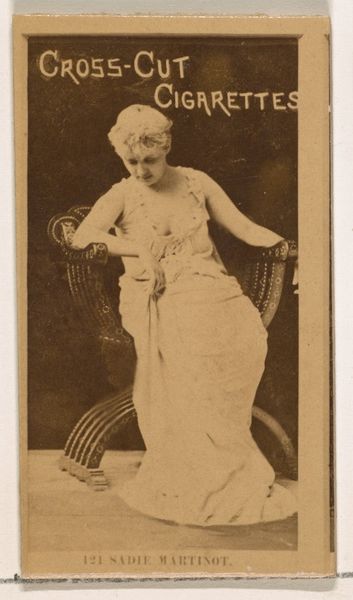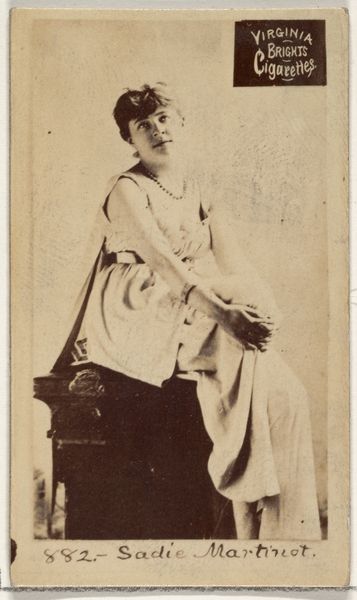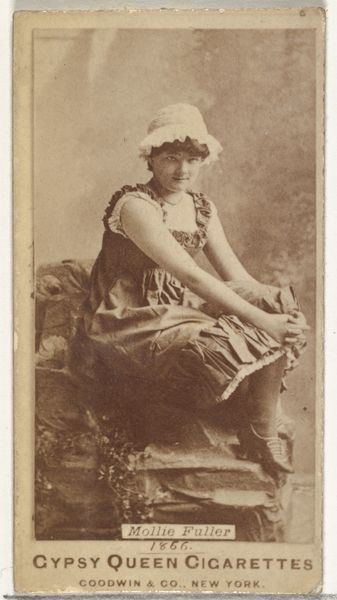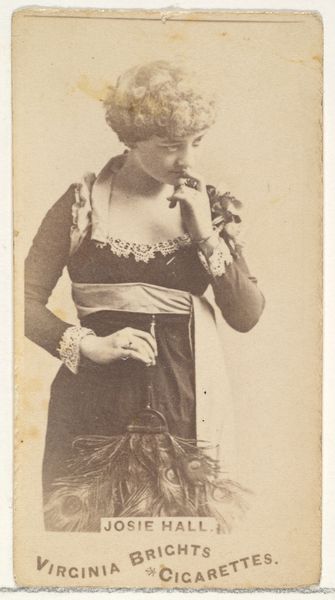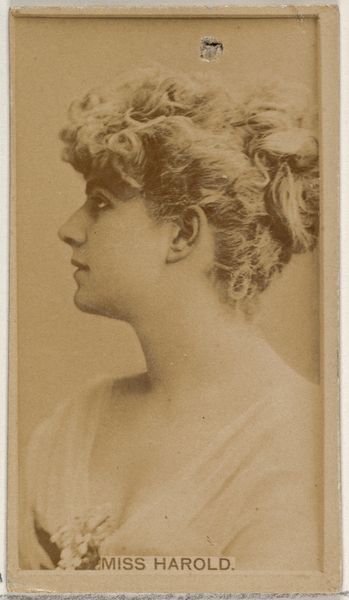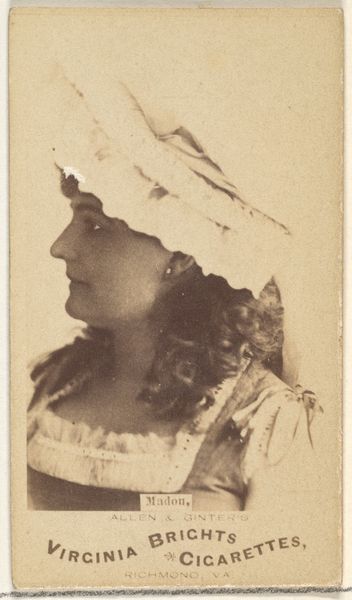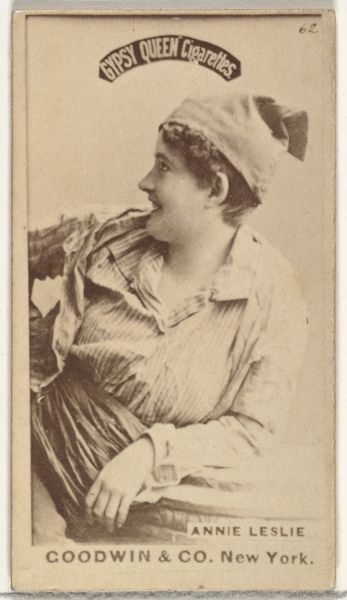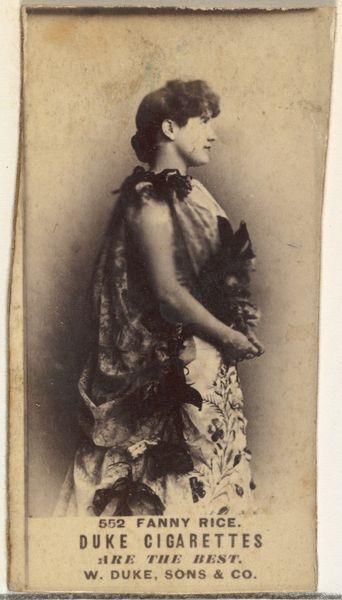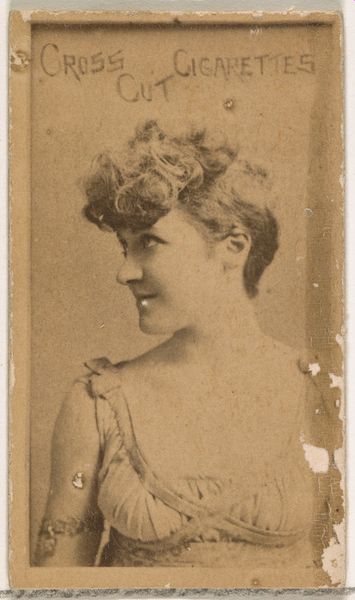
Miss Rubens, from the Actresses series (N203) issued by Wm. S. Kimball & Co. 1889
0:00
0:00
drawing, print, photography
#
portrait
#
drawing
#
aged paper
#
toned paper
#
16_19th-century
# print
#
photography
#
19th century
Dimensions: Sheet: 2 5/8 × 1 3/8 in. (6.6 × 3.5 cm)
Copyright: Public Domain
Curator: Immediately, the tonal range gives the piece a very serene quality, wouldn't you agree? There's a subtle play of light across the subject's features that softens her expression. Editor: It does have a calm formality to it. This is "Miss Rubens, from the Actresses series," a promotional card produced around 1889 by Wm. S. Kimball & Co., a cigarette manufacturer. The image likely comes from a photograph, which was then reproduced as a print on paper. Curator: It's fascinating how commercial culture embraced portraiture to enhance its brand identity. How would this little material thing circulate, what work would it perform? Was this distributed as part of a set? Editor: Yes, exactly. Tobacco companies like Kimball issued these cards in sets featuring actresses, athletes, and other public figures. It offered consumers a tangible collectible along with their purchase. Also, what of her clothing, its folds and texture rendering, how would you analyze these as conveying ideas of status and femininity? Curator: Indeed. But look closer, to see if the texture signifies only status. These objects worked in various ways. One thing striking is the attempt to invoke classic portraiture through mass-produced material—giving ordinary consumers the impression that they are receiving “high art,” but democratized and within reach. The actress, presented within such material processes, loses any sort of individualized depth, she's no longer a person but an "icon." Editor: Semiotically, her gaze directed off to the side is intriguing. Does this pose perhaps symbolize contemplation or is it simply to establish that “alluring distance” from the consumer, necessary to set in motion the desire? Curator: Perhaps a bit of both? But the “toned paper” we see—the color we aesthetically respond to—was more a happenstance that resulted as the image aged; initially these images likely came out more crisp, not imbued with “aged quality.” And now we see them framed with “nostalgia”—separated from their initial purpose in ways that are useful to capital itself. The actress is framed in that light, and now she symbolizes for us… another lost past? Editor: It is indeed layered. The choice of this particular paper and sepia tone—they converge to produce such complexity—lends an enduring and perhaps universal quality to what was once an ephemeral advertising material. A fascinating intersection of artistic construction, commercial culture, and material practice! Curator: An intersection in which social forces operate to influence what we find to be tasteful, and artistic!
Comments
No comments
Be the first to comment and join the conversation on the ultimate creative platform.
